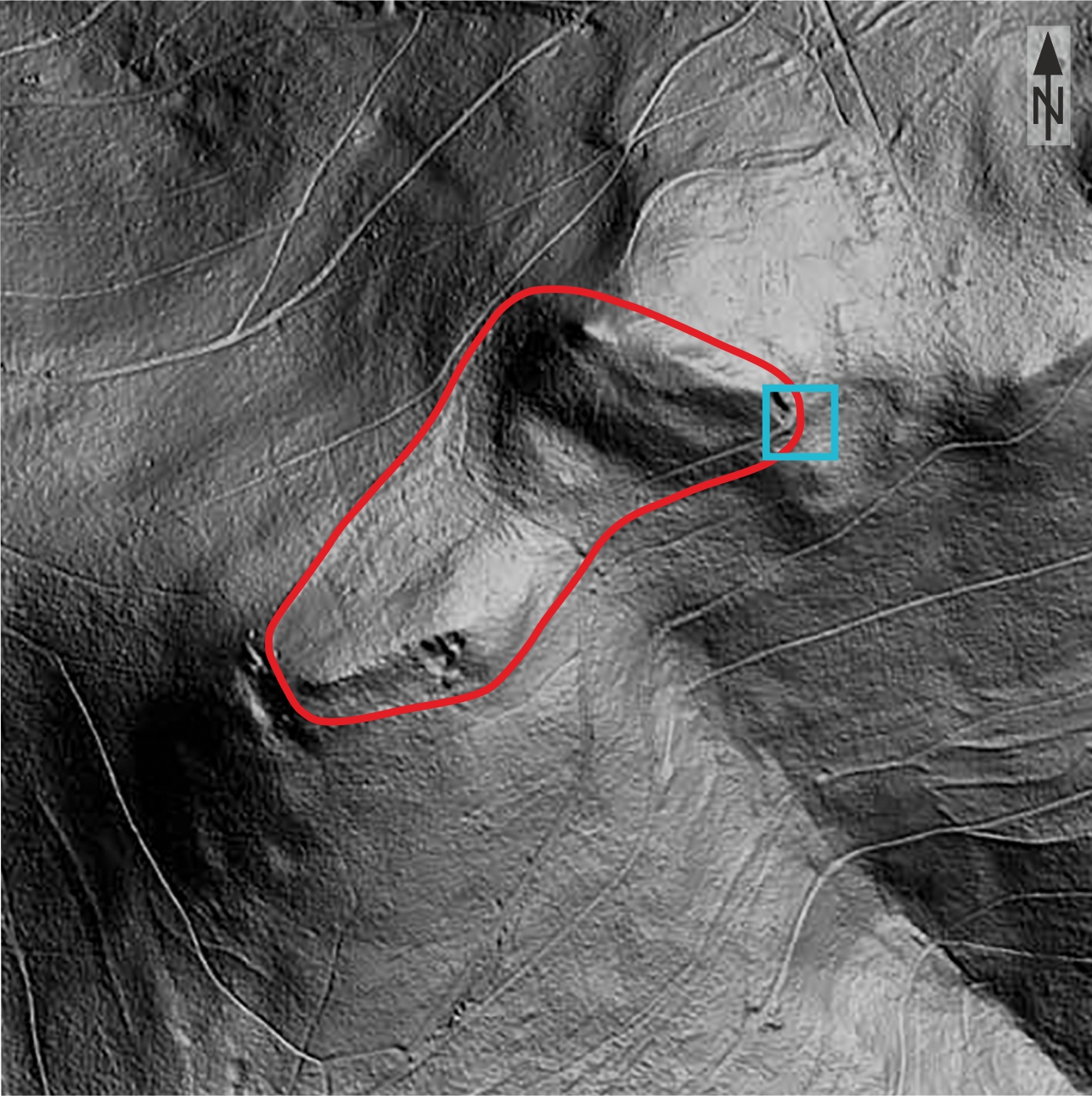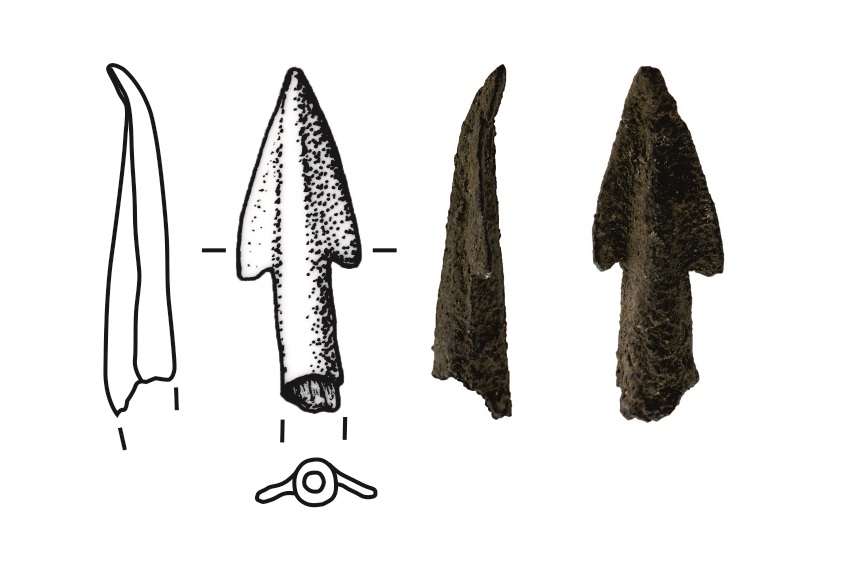Excavations 2017 on Mount Sängersberg (Fulda and Vogelsberg districts)
Mount Sängersberg is of special significance to the LOEWE-Project because of its location in the Lüder valley, where many salt springs had been exploited in historical times. Its fortification was burnt down and its remains show strong signs of vitrificaion. A first survey laying out three test trenches took place between 11th and 29th of September 2017, in order to prepare for a large scale excavation in 2018.
| Mount Sängersberg is situated approximately 18 km north-west from Fulda, on the borders of the municipalities of Schlitz and Bad Salzschlirf, between the Vogelsberg and the Rhön mountains. The mount itself is 498 m high and holds two summits of basalt, which were surrounded by a stone wall made of basalt and sandstone, that reaches a diameter of approximate 450 m |  |
|
| Picture 1: DGM of the Mount Sängersberg with the location of the wall (red) and of the excavation (blue) (Editing B.Voss) |
In April 1901, Joseph Vonderau conducted the first excavations at the Sängersberg, focusing on the wall, which is still visible. He could already determine that the wall had been burnt down, as the basalt and sandstones used within the construction exhibit various marks of fire. He called this fortification a cyclopean wall but he was undetermined whether a wood construction had been present or not.
| During his survey, some prehistoric sherds as well as charcoals were found. One of this sherd, that is lost today, showed a Kornstichverzierung, which allows to date it to the the Bronze Age. In the 1950’s, other surveys and recordings of the stone wall took place, most recently in 1997 through the Archäologischen Arbeitskreis des Fuldaer Geschichtsvereins. |  |
|
| Picture 2: Bronze Age sherd with "Kornstrichverzierung" (Vonderau 1901) |
At the foot of mount Sängersberg, some burial mounts are present, probably dating back to the Bonze Age and the early Iron Age. They share a similar topographical situation with the burial mounts from Stallberg and Kleinberg. Until now, it was not possible obtain a reliable dating for the fortification at the Sängersberg. Yet the indications stated above let to the consideration that its origin lies within the Bronze Age. This is why our first campaign took place, with the aim to date the burnt wall on its top.
| For the first trench to section the ancient wall, we chose a spot where a contemporary path through the forest already cuts the wall (Picture 3). The profile that originates from this situation has been set back and straightened in order to give it a scientific documentation through photos and drawings. A posthole and remains of the old surface were observed under the wall. | ||
| Picture 3: Section in the ancient wall (Foto H.Blitte) | ||
| A posthole and remains of the old surface wehre observed under the wall. Different types of marks of fire have been also identified: Very red sandstones, vitrified pieces of basalt and a layer consisting of charcoals | ||
| Picture 4: vitrified pieces of basalt in situ in the Wall (Foto H.Blitte) |
| A second area was excavated at the exact location where J. Vonderau already layed a trench through the wall in 1901. The most remarkable find was discovered there: a single bronze arrow head, which looks similar to the arrow heads known from Late Bronze Age. |  |
|
| Picture 5: Bronze arrow head (Photo and drawing B.Voss) | ||
| A third section was cut through the wall, which revealed a row of big stones. New investigations should help to understand if this row formed the face of the wall or if it was part of the construction within it. | ||
| Picture 6: A row of big stones (Photo H. Blitte) |
For a series of archaeometrical and archaeobotanical analyses, several samples of soil were taken. They already delivered a range of carbonized seeds. A first series of radiocarbon dates is anticipated with a lot of suspense, in an attempt to date and the fortification and attribute it culturally within its timeframe. In 2018 further excavations should take place conducted within the LOEWE-Project, in further cooperation with the municipalities of Schlitz and Bad Salzschlirf and the hessenForst. Our goal is to gain a better understanding of the history of Mount Sängersberg and its fortification.
(Authoren Hélène Blitte and Rüdiger Krause)




